On the Bookshelf
Faculty books
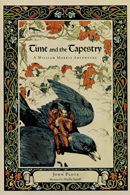
Bunker Hill Publishing, $18.50
The life and work of Arts and Crafts master William Morris are the warp and weft of this beautifully worked time-travel adventure for readers age 9 to 14. On the back of a giant blackbird, 13-year-old Jen and her younger brother fly around 18th-century England — Canterbury, Oxford, Trafalgar Square — to solve a puzzle posed by an unfinished Morris tapestry. Before their rapidly molting ride loses all his feathers, the children have to fill in the blanks and find a way back to 21st-century Boston. Plotz, a professor of English, weaves a seductive mix of history, culture and fantasy.
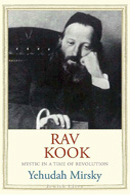
Yale University Press, $25
The first chief rabbi of Jewish Palestine, Abraham Isaac Kook (1865-1935) is a figure not widely known in the English-speaking world. Mirsky, associate professor in the Department of Near Eastern and Judaic Studies, does his part to raise Rav Kook’s profile with the first English-language biography of the Jewish leader in more than 50 years. “Souls of his magnitude do not come our way often,” Mirsky says of the theologian, who rejected both “the terrible certainty of dogmatism and the terrible uncertainty of doubt.”
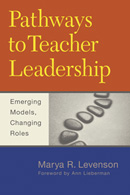
Harvard Education Press, $24.95
How do teachers become a voice for change at their school? More than that, how do they expand their reach to spark change at the district, state and national levels? Levenson, the Harry S. Levitan Director of Teacher Education at Brandeis, presents case studies of men and women who, with varying degrees of success, went from inspiring a classroom to spearheading transformation on a broader scale. These instantly relatable models give aspiring leaders an up-close tutorial in education innovation.
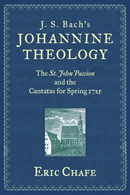
Oxford University Press, $74
Chafe, the Victor and Gwendolyn Beinfield Professor of Music, looks closely at Bach’s “St. John Passion” and his post-Easter cantatas of 1725 to create a detailed picture of the composer’s theological tenets — in particular, his deep response to the Gospel of John. “The more we study Bach’s works,” the author writes, “the clearer it becomes that his own interaction with the religious ideas of his time and surroundings is an intricate one.”
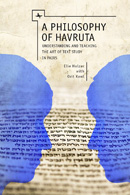
Academic Studies Press, $29
Two heads are better than one. So goes the thinking behind havruta, the Jewish education practice in which students analyze and debate biblical text in pairs, a style of engagement that’s gaining ground in other areas of education as well. Co-written by Kent, a senior research associate and core instructor in the DeLeT/MAT program, and an offshoot of Brandeis’ Beit Midrash Research Project, “A Philosophy of Havruta” will interest education theorists and practitioners alike.
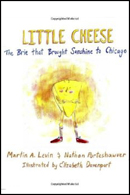
CreateSpace, 2013
Can un petit yellow brie from Paris make it big in a judgmental world that prefers creamy white? Mais oui, declares this children’s book, created by trois Brandeis faculty and alums — Levin, a professor of politics; Porteshawver ’09; and Davenport, a post-baccalaureate in studio art. The authors call their savory tale of pluck and courage an “ugly duckling story for our multicultural age.”
Alumni books
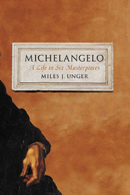
Simon & Schuster, $29.95
Written with captivating clarity and detail, this biography shines new light on Michelangelo by focusing on a half dozen of his masterworks in painting (the Sistine Ceiling and the Last Judgment), sculpture (the Pietà, David and the Medici tombs) and architecture (St. Peter’s Basilica). Unger, an art historian and journalist, adds dimension to our understanding of a colossus who, through enormous ambition and talent, “transformed both the practice of art and our conception of the artist’s role in society.”
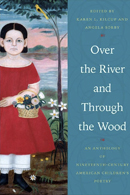
Johns Hopkins University Press, $29.95
Good luck resisting the charms of this handsome 592-page anthology of 19th-century American children’s poetry. Arranged according to theme — growing things, feathered friends, slavery and freedom, and so on — the verses plunge readers of every age into the abundant delights of a golden age in American poetry, with the book’s period illustrations as the icing on the cake. Kilcup, an English professor at the University of North Carolina at Greensboro, and her co-editor include works by Whittier, Dickinson, Longfellow and many other poets, both celebrated and lesser-known.
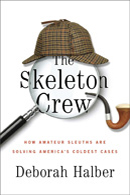
Simon & Schuster, $25
The subtitle of this nonfiction account — “How Amateur Sleuths Are Solving America’s Coldest Cases” — gives you your first clue about its subject matter: the growing number of ordinary folks who try to ID unidentified human remains by combing the Web for pertinent data. Halber, a science reporter, writes vividly about these passionate Sherlocks and the mysteries they’re able to crack. The less-than-strong of stomach may want to speed-read over Halber’s more unflinching descriptions, especially those related to decomposing bodies and claustrophobic morgues.
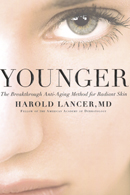
Grand Central Life and Style, $27
If you were a Beverly Hills dermatologist, you’d want Ryan Seacrest, Ellen DeGeneres and Kim Kardashian to lavish your skincare techniques with praise. Well, Lancer is, and they do, in back-cover blurbs for “Younger,” which explains how to polish, cleanse and nourish even the most troublesome skin. Lancer doesn’t recommend some impossible pursuit of celebrity perfection; he offers plenty of practical advice your dermis and epidermis have been thirsting for.
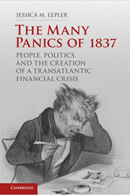
Cambridge University Press, $29.99
During the Panic of 1837, people around the globe worried about their family’s financial solvency. Or was it their country’s economic stability? If you had talked with residents of New Orleans, New York or London, the fears they expressed would have been tied to their region. Even today, political historians and economic historians describe the upheaval’s causes in various ways. So was the Panic of 1837 one event or many? Lepler, an assistant professor of history at the University of New Hampshire, answers this question with the skill of a novelist juggling interconnected narratives.
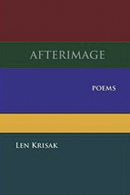
Measure Press, $20
Plainspoken and visual, Krisak’s poetry chronicles life’s vibrancy and evanescence, with a point of view that is often wickedly funny. A poem about Rembrandt’s “The Anatomy Lesson” compares the corpse’s eyes to “devilled eggs” and calls attention to the splayed “salmon-hued” muscles. And in a poem titled “Not in So Many Words: Epigrams,” there’s this bit of advice to fellow bards: “First astonish, / Then admonish.”
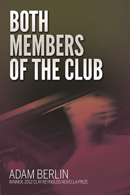
Texas Review Press, $12.95
Winner of the Clay Reynolds Novella Prize, “Both Members of the Club” follows three longtime friends — two men and a woman — trying to make their way out of difficult upbringings and into some semblance of success in New York City. Each struggles to outlast the hard knocks that rain down, especially the men, who are boxers, one by occupation, the other by avocation. Amid the competitiveness and the jealousies, Berlin ensures a few moments of grace ring out, like a bell marking the end of a round.
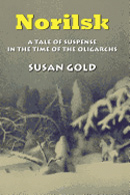
Full Court Press, $18
In the years after the Soviet Union’s fall, corruption was king in Russia, and newly minted capitalists did anything they could to get a leg up. This novel, set during the early 1990s, takes readers into the depths of that kleptocracy when the central character, an American businesswoman, returns to Russia to find her lover killed under mysterious circumstances. Author Gold saw the changes that roiled Russia firsthand as chief representative of AIG’s trading office in Moscow.

American Library Association, $55
“Read it to me again!” The demand, so familiar to parents, may prove the little ones know what’s best for them after all. Diamant-Cohen, an early-childhood specialist at Baltimore’s Port Discovery Children’s Museum, and her co-author show educators how to strengthen preschoolers’ school readiness and life skills through reading aloud. The key, the authors assert, is repetition, which allows young listeners to build upon knowledge they’ve already gained.
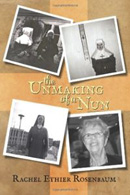
CreateSpace, $10.33
In 1957, a lively, intelligent 17-year-old New Englander decides to enter a convent. Eleven years later, she decides to leave. This fascinating memoir, based on the author’s diaries, describes her life between these decisions: from the many rules and privations she encountered in her religious order (early on, she was told not to smell the roses growing on the convent grounds, to “mortify” the senses) to the generosity and warmth of some of the sisters. Rosenbaum went on to marry, have two sons and serve for 33 years as president of the Carroll Center for the Blind, in Newton, Mass.
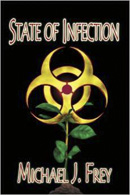
Black Rose Writing, $16.95
Frey is a New York City physician, so you’re not surprised when his zombie novel includes a doctor protagonist and a medical explanation for the sudden zombie apocalypse that turns Manhattan upside down. Along with this dose of forensic grounding, “State of Infection” also features political intrigue, a wry sense of humor, an 1860s Civil War theme and sexual entanglements. Not to mention waves of marauding walking dead.
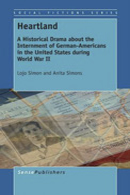
Sense Publishers, $28
Based on historical fact, “Heartland” is a play about the tragedies that befall a German-American family during World War II when German POWs arrive to work on their farm. Simon — a playwright, dramaturg and journalist — and her co-author convey the seeping prejudice and fear that can turn neighbor against neighbor.
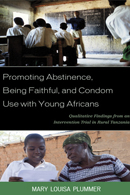
Lexington Books, $120
Plummer, who works in the public-health field in Tanzania, describes a 12-year program that attempted to reduce HIV infection rates by encouraging low-risk “ABC” behaviors — abstinence, being faithful and condom use — among adolescents in the East African country’s rural areas. The effort in Tanzania was a low-cost, large-scale one that necessitated many compromises (for instance, between national policies and internationally approved best practices), offering an interesting test case for other public-health interventions.
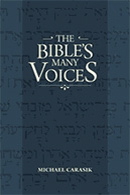
University of Nebraska Press, $31.95
Creator of the Torah Talk weekly podcast, Carasik points out the variety of voices in the Jewish Bible, coming from writers with markedly different perspectives. Carasik explains how to distinguish among the voices — most readers find themselves wanting to make friends with some and argue with others, he says — as well as what the various narratives tell us about the world from which the Bible grew.
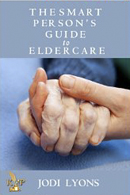
Keith Publications, $12.95
As Bette Davis is said to have observed, “Old age ain’t no place for sissies.” One of the many challenges confronting elders is knowing how to navigate the often expensive and always confusing options for living happily and healthily. Eldercare consultant Lyons offers her advice on making the right decisions in a fragmented marketplace.
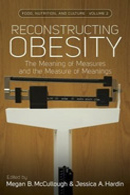
Berghahn Books, $90
Obesity is one of the most discussed and widely studied human conditions, yet scant attention has been devoted to how and why we eat what we do, or how views on health and bodies vary across cultures. The essays here attempt to rectify that by exploring the effect of cultural assumptions on medical and societal ideas about obesity and the factors that make us fat.
Brandeis University Press
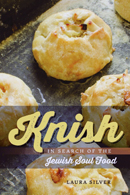
$24.95
After her favorite Brighton Beach knish shop closed its doors, journalist Silver began a culinary pilgrimage. She hunted worthy knishes throughout the New York City boroughs. She sampled knish forebears and close cousins in cuisines around the world. She decoded knish references in pop culture. She tracked down the granddaughters of Mrs. Stahl, the woman who opened that now-shuttered emporium in Brooklyn. And, fortified with knish knowledge, she penned this satisfying, entertaining love letter to an iconic treat, stuffed with goodness.
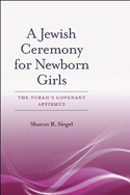
$29.95
In Jewish culture, the birth of a boy is celebrated on the eighth day with a brit milah. Yet a newborn girl is communally celebrated whenever or however her family sees fit. Siegel, a practicing attorney, explores the history of Jewish welcoming ceremonies for girls as a way of guiding the development of rituals that offer a baby girl the same loving — and traditional — reception her brother receives.
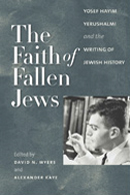
$40
This volume assembles a mosaic of essays by Bronx-born Yosef Hayim Yerushalmi (1932-2009), viewed by many as the greatest Jewish historian of his time. The lively essays range from “A Jewish Historian in the ‘Age of Aquarius’” to “The Purloined Kiddush Cups: Reopening the Case on Freud’s Jewish Identity.” Adding even more color to the spectrum, the final piece isn’t an essay at all, but a short story: “Gilgul,” the only fiction Yerushalmi ever published, which appeared in The New Yorker nearly two years after his death.
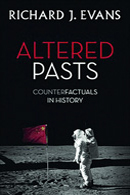
$29.95
Novelists and pseudo-historians have long played the “what if” game with historical details: What if Hitler had gotten into art school? What if Oswald had missed? Such questions work fine as a parlor game, says Evans, a historian at Cambridge University. But he’s not as sanguine about the counterfactual tendencies he spies in serious history, believing that a spun-out tale of what might have been tends to tell us more about the spinner’s beliefs and prejudices than about the actual past or present.
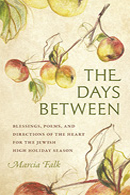
$24.95
A poet and author of contemporary versions of traditional liturgy, Falk reimagines the key prayers and rituals of the Jewish High Holidays from an inclusive, nonpatriarchal perspective. Through her Hebrew and English blessings for meals, prayers for synagogue services, and poems and meditations for quiet reflection, Falk honors a vision of the High Holidays as “ten days of striving to keep the heart open to change.”
